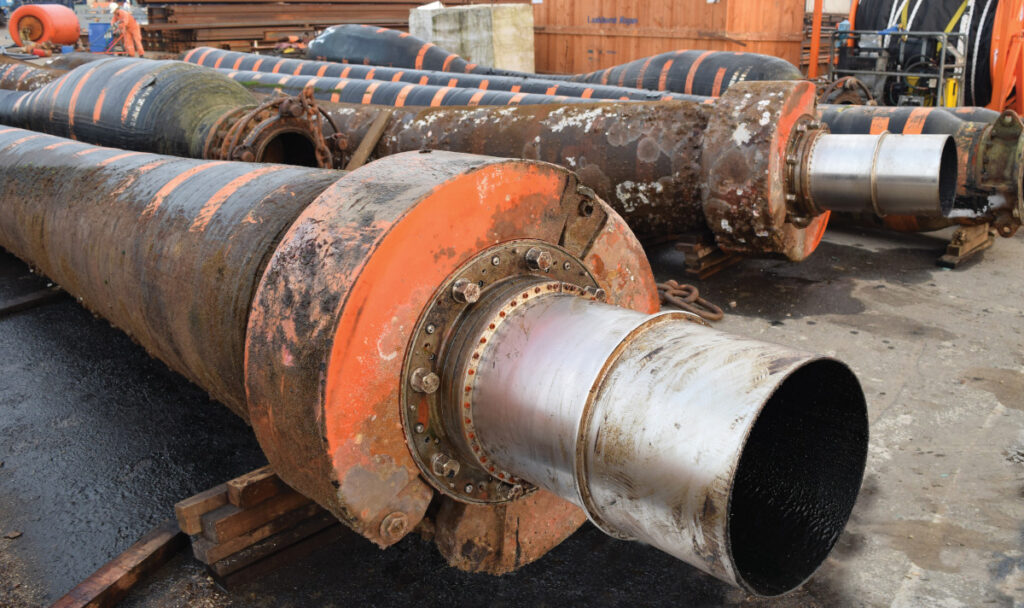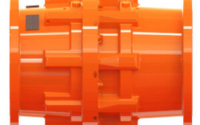Marine Breakaway Couplings Field Verified
The importance of Field Verified in achieving reliable Marine Breakaway Coupling activations
Gall Thomson recently reported there were 16 known activations of its Marine Breakaway Couplings (MBCs) during 2023. The activations were in response to offshore emergencies during media transfer and the activations occurred in nine different countries around the world. Each MBC operated exactly as expected.
Reaching this level of reliability requires experience but this experience takes very different shapes depending on whether you are the operator or the Marine Breakaway Coupling supplier. Given the functional element of MBC choice is not ultimately known until that moment in an emergency when it is expected to activate then qualifying a decision can only rely on prediction.
When that choice is validated then it becomes personal experience for the operator and given the relative infrequent nature of such emergencies when considered within the context of the individual operation, then such experience may not be utilised again any time soon. In the meantime, that experience came too late for that operator where the consequences of an oil spill may have been endured.
For the Marine Breakaway Coupling supplier, experience is a very different shape; or at least it should be. A supplier with a critical mass of in-field operational MBC experience means the operator not only purchases a physical MBC but also the ownership of sufficient experience that ensures the learning curve for designing, specifying and supporting an effective solution has been earned elsewhere.
Remember that MBCs limit the consequences of an event but do not prevent an event from occurring. This means MBCs are in the business of reducing and enabling prediction of consequential risk. And there is an obvious correlation between in-field operational experience and accurate prediction of consequential risk. Afterall, why else would an operator buy and manage an MBC other than to enable reduced and predicted risk.
Accurate prediction also enables reliable expectation regarding the management of the MBC and this means dependable handling and maintenance cost forecasting.
Discovering the interactive and cumulative behaviour of influencing variables
In-field experience both circumvents the limitations of bench testing and confirms or disproves their predictions. In other words, given the large number of real-world variables within an operational environment, bench testing only offers a predication within the constraints of limited or no operational and environmental variables. A more vital exclusion is the influence of time.
The advantage of a critical mass of in-field operational experience provides these additional variables and their interactive and cumulative affects over time. This data then enhances and improves the predictive probability of bench testing and modelling. Within the context of looping data into modelling, this is what black boxes in the aviation industry have been doing for decades.
Utilizing the databank of operational performance
All this provides a glimpse into how Gall Thomson achieves its reliable MBC performances. With nearly fifty years of in-field experience, which includes MBC service and maintenance, refurbishment and activations, this manufacturer has built a databank of knowledge that includes the identification of well over one hundred important product and environmental variables.
Understanding these variables and how they interact and progressively influence performance over time, determine the design, manufacture, specification and management of the MBC which together confirm reliability. It is the value of this confirmation that instigated an important quantifiable performance measurement known as Field Verified.
Field Verified is not a requirement of any procedure, but rather an affirmation of MBC reliability from the perspective of operation performance over its service life.
Given the purpose of the MBC to protect people, operations and the environment, such a validation of reliability enables both reassurance and a demonstration of due diligence on the part of the operator. But most important, Field Verified offers a more reliable prediction of consequential risk.
Confirming reduced risk through validated performance
To claim the label of Field Verified, the manufacturer and its Marine Breakaway Coupling must confirm proven performance criteria within the context of time.
This means proof of in-field reliability is determined over the full expected service life of the MBC. The extensive assessment of the current known variables previously mentioned dictate an optimum service life of 20 years with reliable performance defined within both Passive and Active states.
In-field means the MBC type as defined by its design and source of manufacturer must have been constantly used in the operational field during that time and interrupted only by scheduled maintenance or valid activation in response to an emergency. Passive state means the MBC was quietly being part of the transfer system without any undue attention being brought to itself.
Reliable Passive state is therefore the predicted performance for the years as defined within its maintenance schedule. Reliable Passive state performance includes zero spurious activations for a period of at least 20 years. This means, no activation without a designed reason within the parameters of the manufacturer’s recommended MBC use and management.
Active state consists of those few seconds when the MBC activates in response to the conditions for which it was designed. To quantify Active state reliability within the context of Field Verified requires Active state performance on at least 20 emergency occasions such as tanker breakout. This means zero failure to activate on these or any other emergency occasions for which the MBC was designed to activate.
Having just a few MBCs that satisfy in-field reliability is not statistically significant, given the number of potential emergency scenarios, operations and application circumstances. A limited number of manufacturer’s MBCs in operation or a manufacturer’s MBCs in operation over a relatively short time limits the variables required to be known to confirm reliability. Field Verified therefore requires that at least 40 MBCs of its type must have delivered reliability on both its Passive and Active states for a period of at least 20 years.
This minimum operational period of 20 years for the required quantity of commissioned units also provides a critical mass of real-world information that enables the manufacturer to collate scenarios, applications, operational and environmental circumstances from which the MBC’s design, specification, construction and management have evolved and been confirmed.
Marine breakaway couplings field verified
An additional element to Field Verified is the confirmation of the MBC to manage extreme pressure surge scenarios. For those MBCs designed and specified to enable pressure surge protection, the MBC type and its same manufacturer must have successfully activated in extreme surge pressure events on at least 10 occasions; including zero spurious activation and zero failure to activate on these or any other occasions.
The advantage of validated progress
It is the confirmation of data and verified use and the evolutionary design philosophy of Gall Thomson that has enabled its unmatched record for MBC reliability. This approach is core to its understanding that validated progress depends on confirmed in-field variables and it is this that enables operators to buy reduced risk and high level of predictability; after all, there are no other reasons to install an MBC. To compromise any part of this process, simply means buying increased risk.
Field Verified is therefore an important component in confirming to the operator, the ability of the MBC to deliver on what is expected within the context of MBC and consequential risk management. The reliability of 16 known 2023 activations in the Gall Thomson 2023 report seem to confirm the value of Field Verified in managing these important elements in offshore transfer operations.



